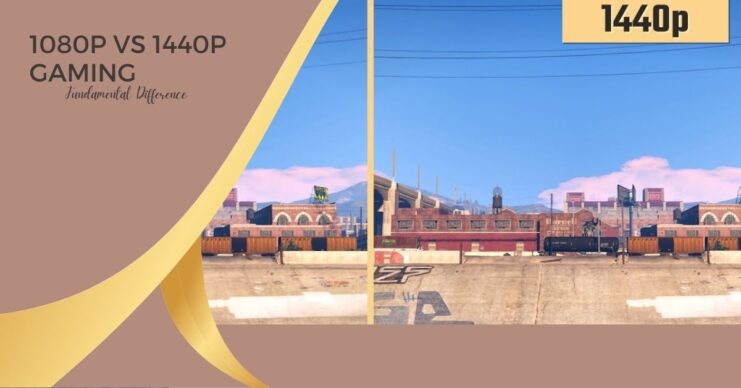The most common display resolution in the world of gaming is Full HD (1080p). However, as more people become aware of the superior image quality available, 1440p is gaining popularity.
The question is now: which option should you pick?
Compare 1080p and 1440p monitors side by side to find which one performs better.
Gaming in 1080p vs. 1440p: Three Things to Take Into Account
Different people hold video games to different standards. Some people may prefer their games to look the finest, while others may prefer them to play the best. This adds intricacy to the discussion of the ideal display resolution for gaming.
It is important to examine each component that makes up these resolutions separately in order to clarify the argument between 1080p and 1440p. For instance, even with less capable current-gen technology, it is rather simple to run contemporary AAA games at 1080p. However, playing games at 1440p will necessitate much more potent GPUs and CPUs.
1. Pixel Density (PPI)
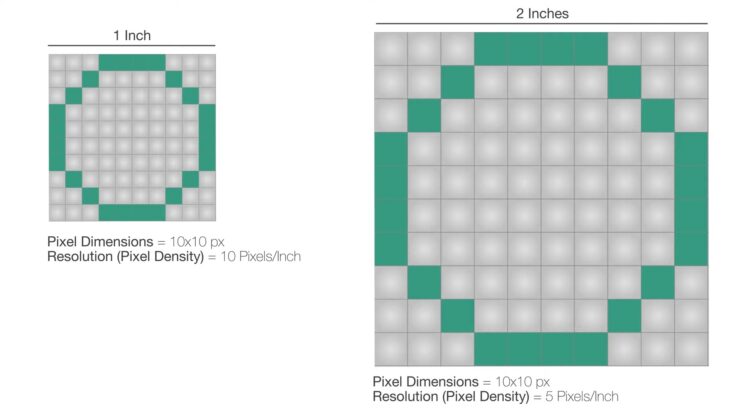
The number of pixels in an inch of a display is known as pixel density. It details the number of pixels that can be seen on each square inch of the display. The sharper the image you view, the higher this number. The PPI of a 24-inch FHD (1920×1080) display, for example, works out to 92.56 PPI. If we keep the monitor size the same but increase the resolution to 2K (2560×1440), the result is 123.41 PPI.
As you can see, increasing the resolution to 1440p significantly raises the PPI, which improves sharpness. The main distinction between 1080p and 1440p monitors is this. 1440p will always be sharper if the display size remains constant. With this in mind, 1440p enables you to expand the display’s size without sacrificing clarity.
Generally speaking, 1080p displays only look decent on 24-inch or smaller screens. Any bigger and the quality of the content on the screen will suffer from pixelation (individual pixels becoming apparent). However, 1440p enables you to use a much larger monitor while maintaining adequate sharpness. A 27-inch 1440p display, for example, has a higher PPI than a 24-inch 1080p panel.
In conclusion, 1440p is the best option if you desire a larger monitor.
2. Video Game Performance
If there isn’t discussion regarding how different resolutions affect performance, there will never be a satisfactory resolution to the 1080p vs. 1440p gaming issue. We probably don’t need to tell you that the performance cost increases with resolution. As a result, playing games on a 1440p display will not be as fluid as playing them on a 1080p monitor. 1440p will have a considerable performance impact.
Simply put, playing games at 1440p resolution will significantly reduce frame rates. The GPU has to work much harder to drive a 2K display than it did for a 1080p monitor. Your GPU will work harder to maintain 1440p 60fps than it does to maintain 1080p 60fps.
In other words, you’ll need a powerful GPU if you want to play graphically demanding games at native 1440p resolution, high or ultra-quality settings, and frame rates of 60 or higher. Purchasing a 1440p display makes sense if your graphics card can support 2560×1440 resolution at decent frame rates. Otherwise, keeping with a 1080p display will be preferable because it will significantly improve your gaming experience.
3. Display Cost
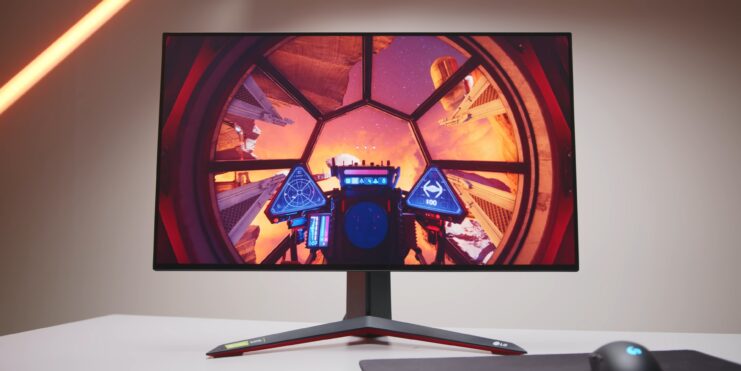
The price of the display is the next aspect you must take into account. Naturally, if we maintain the same refresh rate, panel technology, and response time, 1440p displays cost more than 1080p displays.
The price rises if we include greater refresh rates, such 144Hz. Likewise with panel technology. The most expensive panels are OLED, followed by IPS and VA panels, and TN panels are the least expensive.
If money is not an issue, however, consider OLED or IPS panels, fast refresh rates, low latency, and displays. However, a good 1440p 60Hz TN panel will perform significantly better than a 1080p 60Hz TN panel if money is limited.
However, regardless of the resolution, it makes sense to purchase the fastest panel you can buy for competitive gaming. For instance, having a 1080p 240Hz display will put you ahead of people using 1440p 60Hz monitors.
Graphics Card Compatibility with 1080p and 1440p
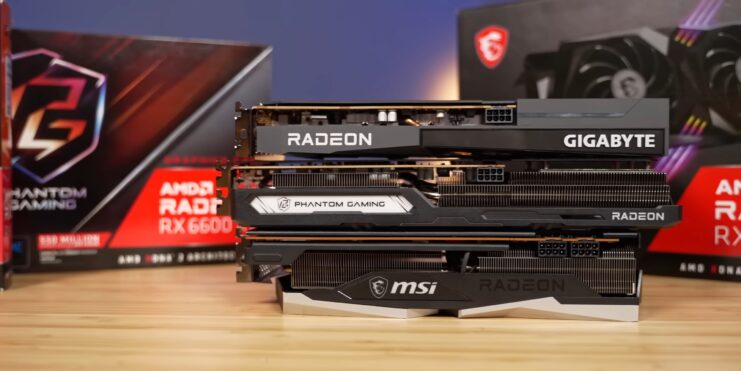
When it comes to graphics card compatibility with 1080p and 1440p monitors, there are a few factors to consider. First, it’s important to know what the resolution of your monitor is. 1080p resolution is 1920×1080 pixels, while 1440p resolution is 2560×1440 pixels. The higher the resolution, the more demanding it is on your graphics card.
For 1080p monitors, most mid-range graphics cards will be able to handle modern games at high settings without issue. Some examples of popular mid-range graphics cards include the Nvidia GTX 1660 Super and the AMD Radeon RX 5600 XT. These cards should provide a smooth gaming experience at 1080p resolution, even with demanding games.
For 1440p monitors, more powerful graphics cards are recommended to ensure smooth performance at high settings. Some examples of high-end graphics cards include the Nvidia RTX 3080 and the AMD Radeon RX 6800 XT. These cards offer enough power to handle modern games at 1440p resolution with high frame rates and high visual fidelity.
Impact on Game Visuals and Immersion
The impact of graphics card compatibility on game visuals and immersion is significant. A graphics card is responsible for rendering the graphics that appear on your monitor, and a powerful graphics card can significantly enhance the visual quality of games.
At 1080p resolution, a mid-range graphics card can provide excellent visual quality at high settings in most modern games. This can result in crisp textures, detailed character models, and vibrant colors that enhance the overall immersion of the game. On the other hand, a low-end graphics card may struggle to provide smooth frame rates and high visual quality, which can detract from the immersive experience.
At 1440p resolution, a high-end graphics card can provide even greater visual quality than a mid-range graphics card. This can result in even more detailed textures, improved lighting effects, and smoother frame rates, all of which contribute to a more immersive gaming experience. However, if the graphics card is not powerful enough, it can result in reduced frame rates and visual quality, which can detract from the immersive experience.
Another important factor to consider when it comes to graphics card compatibility and game visuals is the use of advanced graphics technologies such as ray tracing and DLSS. Ray tracing is a technique that accurately simulates the behavior of light in real-world environments, resulting in more realistic lighting and reflections in games. DLSS, or Deep Learning Super Sampling, is a technique that uses artificial intelligence to improve the visual quality of games while maintaining high frame rates.
Refresh Rates and Response Times
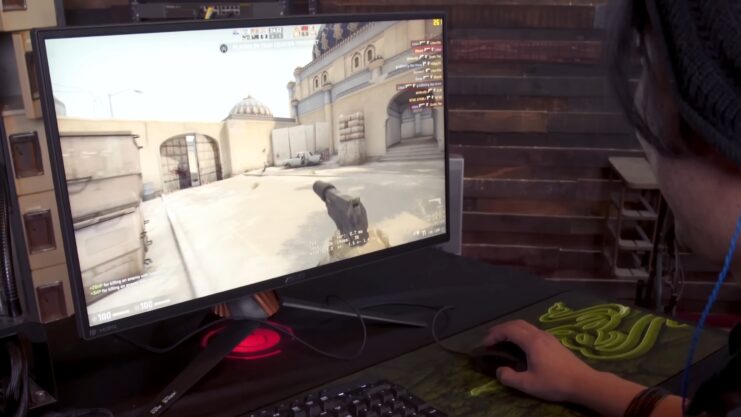
Refresh rates and response times are important factors to consider when choosing between 1080p and 1440p monitors. Refresh rate refers to the number of times per second that a monitor can update the image on the screen, while response time refers to the time it takes for a pixel to change from one color to another.
In general, higher refresh rates and faster response times result in a smoother and more responsive gaming experience. This is particularly true for fast-paced games such as first-person shooters, where quick reflexes and precise aiming are crucial.
At 1080p resolution, most mid-range monitors offer a refresh rate of 60Hz or 75Hz, with response times of around 5ms. This is sufficient for most casual gamers, but serious gamers may want to consider monitors with higher refresh rates and faster response times. Some examples of high-end 1080p monitors include the Alienware 25 Gaming Monitor and the ASUS TUF Gaming VG259QM.
At 1440p resolution, higher refresh rates and faster response times become even more important. Monitors with a refresh rate of 144Hz or higher are recommended for the best gaming experience, with response times of around 1ms. Some examples of high-end 1440p monitors include the ASUS ROG Swift PG279QZ and the Dell S2719DGF.
Making the Decision: Factors to Consider When Choosing Between 1080p and 1440p
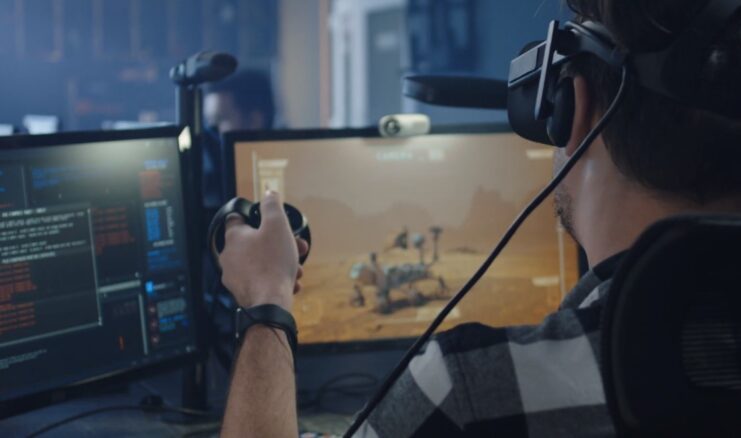
When choosing between 1080p and 1440p, there are several factors to consider. One of the most important is the hardware you have. A powerful graphics card is necessary for gaming at 1440p resolution, and a higher refresh rate monitor will also require a more powerful graphics card.
Another factor to consider is the size of the monitor. At 24 inches or less, 1080p resolution is sufficient for most users. At larger sizes, such as 27 inches or more, 1440p resolution may be preferred for sharper and more detailed images.
Finally, budget is also a consideration. 1080p monitors are generally less expensive than 1440p monitors, so if budget is a concern, 1080p may be the better choice.
FAQ
Can a mid-range graphics card handle 1440p resolution?
It depends on the specific graphics card and the game being played. Some mid-range graphics cards can handle 1440p resolution at high settings and frame rates, while others may struggle. It is important to check the recommended specifications for the game you want to play.
What is the difference between TN, IPS, and OLED panel technology?
TN panels are the most common and affordable panel type, but they have limited viewing angles and color accuracy. IPS panels have better color accuracy and wider viewing angles, but they are more expensive. OLED panels offer the best color accuracy and contrast, but they are the most expensive.
Is DLSS worth using in gaming?
DLSS can provide improved visual quality while maintaining high frame rates, making it a valuable technology for gamers. However, not all games support DLSS, and it may not be necessary for all users depending on their hardware and preferences.
Can a 1440p monitor be used for work and productivity?
Yes, a 1440p monitor can be used for work and productivity, and it may provide a more comfortable and efficient workspace with its higher resolution and larger display size. However, it may be more expensive than a 1080p monitor and may require a more powerful graphics card for some applications.
Conclusion: Which Resolution is Right for You in 2024?
In conclusion, the decision between 1080p and 1440p resolution depends on several factors, including the hardware you have, the size of the monitor, and your budget. If you have a powerful graphics card and want the best gaming experience, a high-end 1440p monitor with a high refresh rate and fast response time is the way to go. If budget is a concern or you have a smaller monitor, 1080p resolution may be sufficient. Ultimately, the decision depends on your individual needs and preferences.

